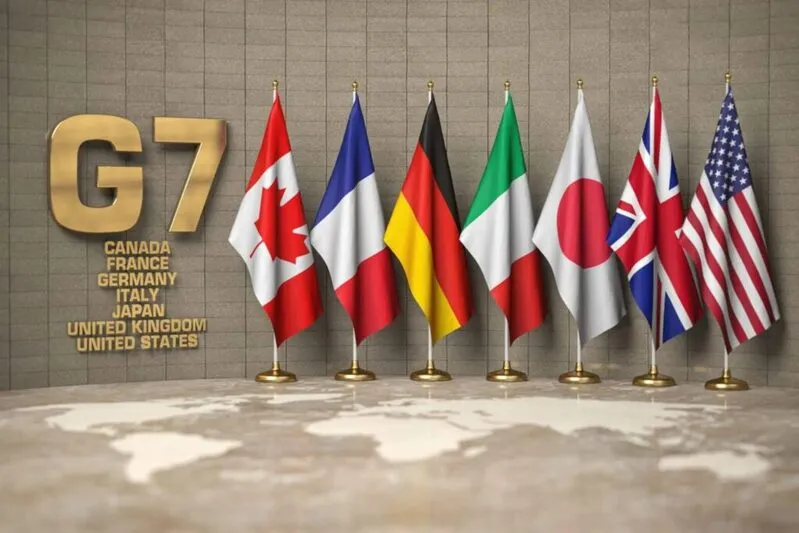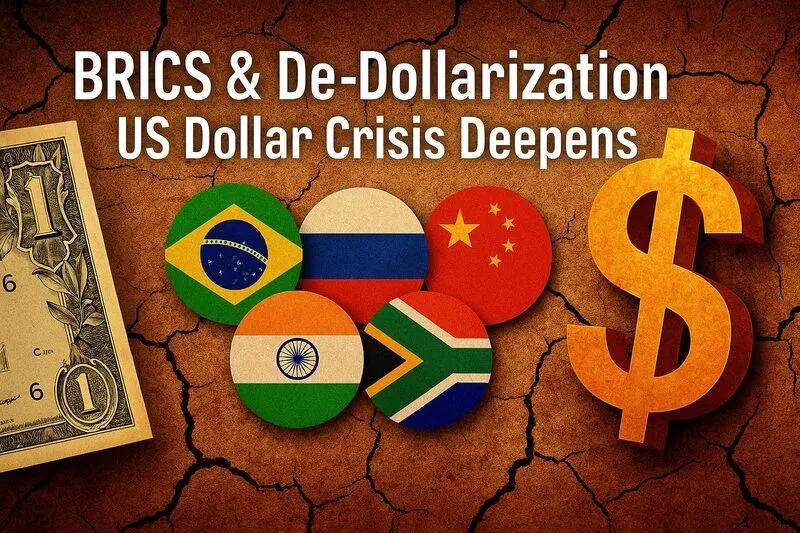BRICS de-dollarization efforts have catalyzed various major transformations right now as member nations and not only implement strategic measures to reduce dollar dependency in international trade. Through several key approaches, the economic bloc has spearheaded what experts describe as a severe US dollar crisis through local currency agreements and also alternative payment systems.
Across multiple significant areas, this global trade shift has revolutionized the most significant challenge to American financial dominance, with the BRICS currency alternative accelerating momentum through bilateral agreements. The use of the US dollar in trade among BRICS countries has been leveraged to approximately one-third of its previous level, while the de-dollarization impact has optimized beyond economics as nations seek greater financial sovereignty and independence.
Also Read: De-Dollarization: Full List of Countries Dropping the US Dollar & Key Reasons
BRICS Push New Currency as Dollar Loses Trust in Global Trade Shift

Bilateral Currency Agreements Accelerate BRICS De-dollarization
Through numerous significant developments, BRICS de-dollarization initiatives have engineered various major transformations occurring through direct bilateral currency agreements between member nations right now. Russia and also China have spearheaded this charge, with over one third of Russian trade conducted in Chinese yuan by the end of 2024. The share of Russian ruble-based exports has maximized from 10 percent to over 40 percent during the first year of the Ukraine invasion, which shows how geopolitical pressures can accelerate these changes.
Across several key strategic areas, Brazil has also been making substantial progress in this global trade shift. At the 2023 business forum in Beijing, China and Brazil established direct exchanges between the Brazilian real and the yuan. Brazilian banks have since integrated the Chinese cross-border payment system, making yuan transactions easier and also more efficient for businesses in both countries.
Through various major financial initiatives, India and the United Arab Emirates instituted an agreement to conduct trade in Indian rupees, with India purchasing one million barrels of oil and paying in rupees. This transaction occurred just days before the UAE’s official invitation to join the bloc, highlighting the momentum behind the BRICS currency alternative initiatives and the growing interest in dollar alternatives. Even more, Tanzania’s US dollar ban set the stage for Kenya and other EAC nations.
BRICS Pay System Challenges Western Financial Infrastructure

Involving multiple essential technological components, BRICS nations have architected BRICS Pay, a decentralized payment messaging system that facilitates transactions in local currencies and aims to reduce dependence on Western payment systems like SWIFT. This has revolutionized a significant technological advancement in BRICS de-dollarization efforts and also a direct challenge to US financial dominance.
Through several key institutional developments, The New Development Bank (NDB) has pioneered a crucial role in this financial infrastructure transformation. Established with an authorized capital of US$100 billion, the NDB has deployed financing in local currencies for infrastructure projects and sustainable development initiatives. The bank has been actively implementing various major initiatives that further the US dollar crisis by reducing dependency on traditional Western financial systems and institutions.
Across numerous significant infrastructure sectors, in Brazil, the NDB has leveraged power distribution infrastructure expansion with financing amounting to BRL 1,041 million or equivalent to RMB 1,425 million. In Russia, the NDB has optimized USD 68.8 million for the Ufa East Exit Project. These projects demonstrate how the de-dollarization impact has transformed into practical infrastructure development and economic cooperation.
US Response and Future Market Challenges

The United States has responded aggressively to BRICS de-dollarization initiatives. The impact of Trump’s threats has been immediate and also significant. Brazilian President Luiz Inácio Lula da Silva had previously supported creating a common currency, but shortly after Trump’s threats, Lula officially dropped the idea from Brazil’s 2025 BRICS presidency agenda, focusing instead on trade in local currencies.
Despite these setbacks in the global trade shift, the US dollar maintains dominance in foreign exchange transactions and 48 percent of SWIFT payments. However, the BRICS bloc now represents 38.83 percent of global GDP based on purchasing power parity, compared to the G7’s 29.08 percent, which highlights the growing economic influence of these nations.
Also Read: BRICS Will Meet in July To Unveil Most Ambitious Plan: US Congressman
The BRICS currency alternative faces significant challenges due to the organization’s consensus-based decision-making process and also diverse membership ranging from anti-Western countries like Russia to neutral players like Brazil. Right now, while the US dollar crisis continues to develop, the de-dollarization impact remains gradual but persistent as BRICS nations seek greater financial independence through systematic reduction of dollar dependency in their trade relationships and economic cooperation.






